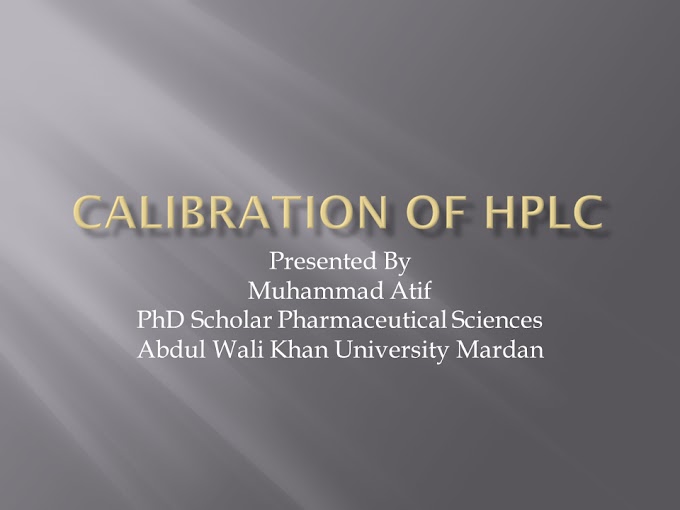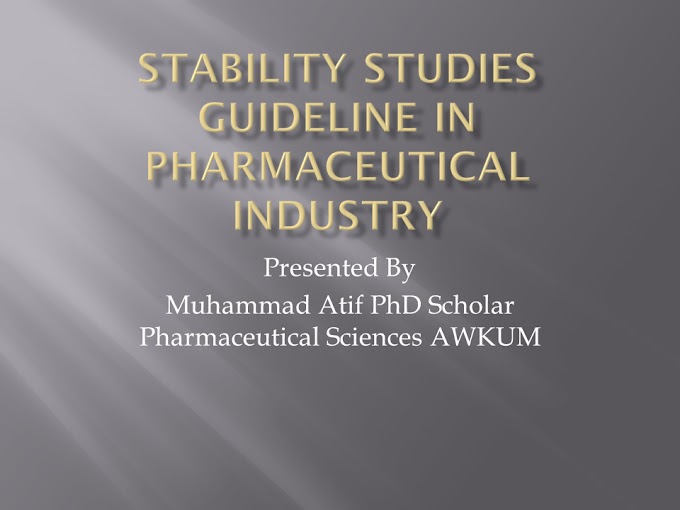Impurities in Pharmaceuticals
Impurities
— A
drug product or any entity that is not a component of formulation ingredient.
— In
pharmaceuticals impurities are the unwanted chemical entities that remain with
active ingredients, develop during formulation or with aging of active
pharmaceutical ingredients or formulated product.
Classification
— Organic
Impurities
— In
organic impurities
— Residual
solvents
— Organic
Impurities
— Identified
or unidentified impurities that forms during manufacturing process or during
storage of new drug substance.
— They
include the following
— Starting
materials
— By-products
— Intermediates
— Degradation
products
— Reagents,
ligands and catalysts
— In
organic impurities
— Inorganic impurities are mostly identified and arise
during manufacturing process.
— They
include
— Reagents
— ligands
and catalysts
— Heavy
metals or other residual metals
— Inorganic
salts
— Other
materials (e.g., filter aids, charcoal)
— Residual
solvents
— Residual
solvents are organic or inorganic liquids of known toxicity that are used as
vehicle for solution or suspension preparations of new drug substance.
Important Terminologies Used During Impurities Studies as
Per ICH Guideline
— Chemical
Development Studies:
— Studies
carried out during the development, optimization, up gradation and validation
of a new chemical entity or drug.
— Impurity:
— A
drug product, or any entity that is not a component of formulation ingredient.
— Impurity
profile:
— Detailed
presentation of identified and unidentified impurities associated with a new
drug substance.
— New
drug substance:
— A
therapeutic substance developed for the 1st time and that is not
registered previously as a therapeutic entity. It may b a complex, ester form
or salt form of already registered drugs. It is also called as new molecular
entity or new chemical enetity.
— Starting
material:
— A
material used in the synthesis of new drug substance is called starting
material. They are commercially available and of known physical and chemical
properties.
— Intermediate:
— Any
entity formed or produced during the step by step manufacturing of newly
developed drug is termed as intermediate. Before it develops to new drug entity
it has undergoes some chemical transformation.
— Ligand:
— Any
substance that posses strong affinity towards a metal ion.
— Identified
impurities:
— Any
impurity that has known structural characterization is termed as identified
impurity.
— Unidentified
impurities:
— Any
impurity the structural characterization of which is unknown and is defined by
qualitative analytical techniques like HPLC retention time is termed as
unidentified impurity.
— Specified
impurities:
— Any
identified or unidentified individual impurity which has proper limits of
acceptance criteria and is listed in the specifications given to a newly
developed drug is termed as specified impurity.
— Unspecified
impurities:
— Any
impurity that is included in the general acceptance criteria limitations but
have no individual acceptance limits in the specifications allotted to a newly
developed drug.
— Identification
threshold:
— Identification
threshold is a limit above which an impurity should be identified.
— Qualification
threshold:
— Qualification
threshold is a limit above which an impurity should be qualified.
— Reporting
threshold:
— Reporting
threshold is a limit above which an impurity should be reported.
— Identification
threshold:
— Identification
threshold is a limit above which an impurity should be identified.
— Qualification
threshold:
— Qualification
threshold is a limit above which an impurity should be qualified.
— Reporting
threshold:
— Reporting
threshold is a limit above which an impurity should be reported.
— Identification
threshold:
— Identification
threshold is a limit above which an impurity should be identified.
— Qualification
threshold:
— Qualification
threshold is a limit above which an impurity should be qualified.
— Reporting
threshold:
— Reporting
threshold is a limit above which an impurity should be reported.
|
Maximum Daily Dose |
Reporting Threshold |
Identification Threshold |
Qualification threshold |
|
≤ 2g/day |
0.05% |
0.10% or 1mg/day |
0.15% or 1mg/day |
|
˃ 2g/day |
0.03% |
0.05% |
0.05% |
Presented By
Muhammad Atif
PhD Scholar Pharmaceutical Sciences AWKUM Khyberpakhtunkhwa






0 Comments